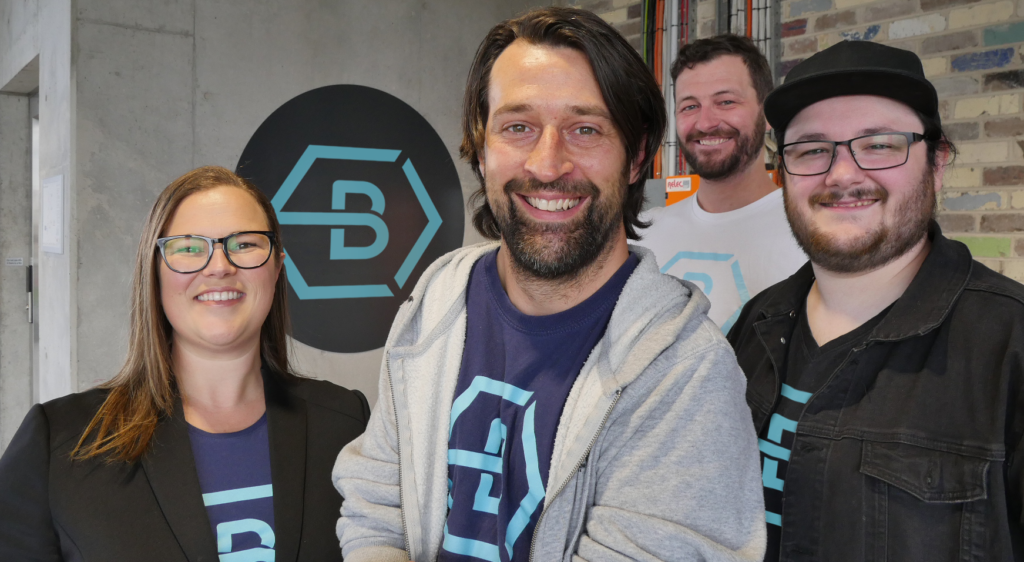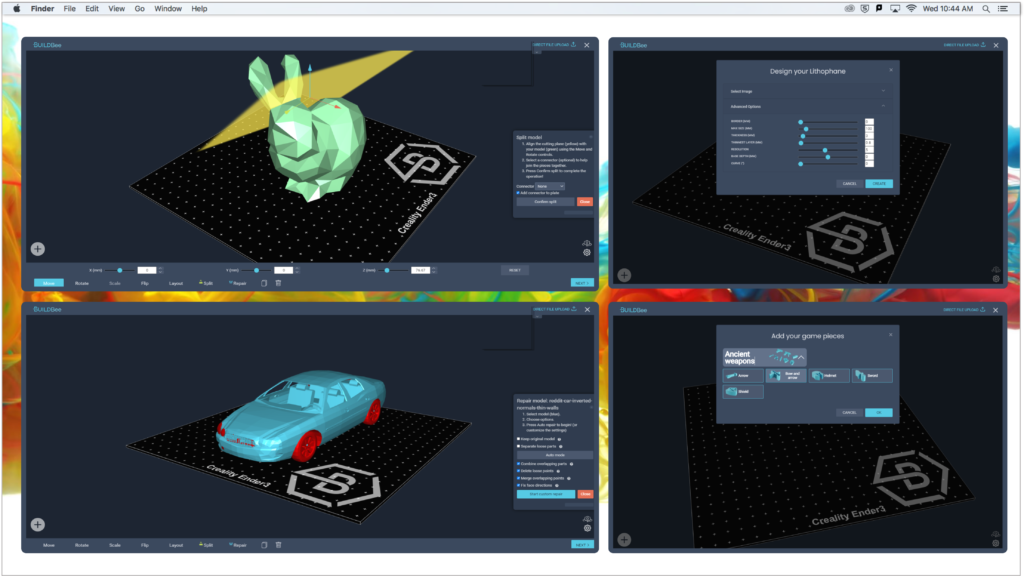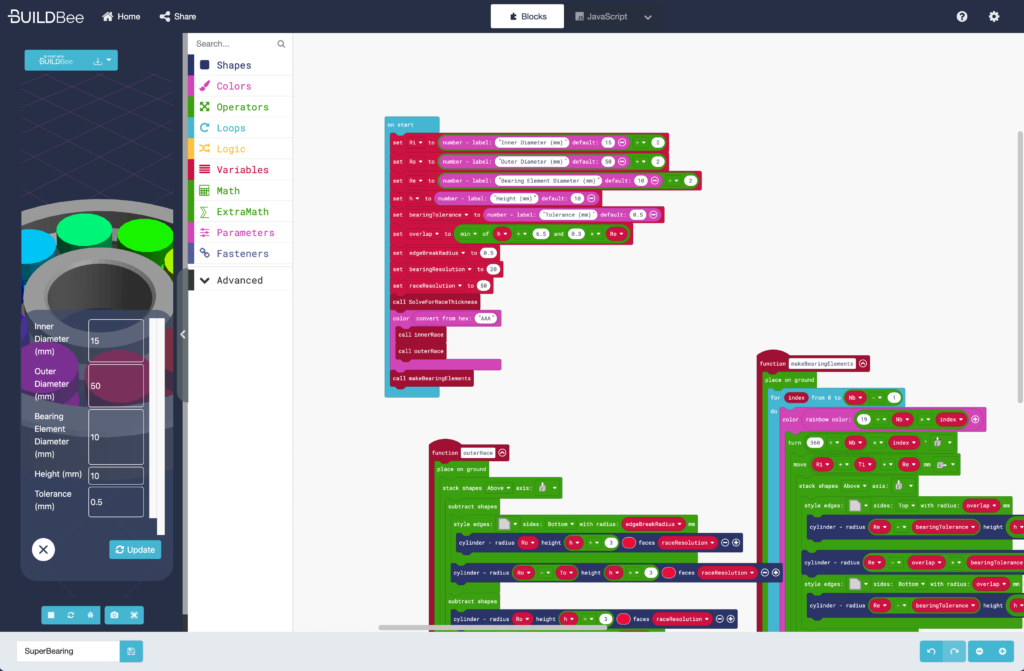
As 3D printing continues to improve on the hardware front, there are still major obstacles to adoption on the software side of the equation, particularly when it comes to entry level users and institutions who may not require industrial equipment. For instance hobbyists or makers who have a great use-case for 3D printing, without needing to know it intimately. Or in schools and universities, where teachers and labs would rather focus on unleashing student creativity than tinkering with printer profiles, easy-to-use software is essential.
After some three years of internal development, BuildBee has emerged as a potential solution as a cloud-based print prep and control tool that lowers the barrier to entry to 3D printing technology. With a streamlined interface, yet advanced features such as auto-repair and extensive part libraries, BuildBee could become a go-to option for everyone from hobbyists to complete enterprises running print farms. We spoke to the CEO, Leanne Connelly, who told us about the company’s slicing tool and how it fits into her larger mission of enabling access to additive manufacturing.
BuildBee sprung from the work that Connelly and her team performed at their previous company, Me3D. There, they developed a simple and elegant 3D printer primarily targeted at schools, with an open design and the ability to 3D print non-toxic, biodegradable materials. This was paired with learning content and training material for teachers. However, as straightforward as the actual printers were, the team realized that the real hurdle was the software.
“We learned a lot about how to bring new people to 3D printing and how to make 3D printing accessible for people who aren’t super into it and totally techy. We realized that there’s quite a lot of scope to improve things for those people and we were quite good at it. Along that journey, the software platform turned out to be probably the biggest barrier to entry that we found and the place that had the most scope to make improvements so that 3D printing could be more accessible for everybody. So, that’s when we started to really focus on our BuildBee software and created our own company around it.” Connelly said.

Caption: BuildBee founders (L to R): Leanne Connelly, Matt Connelly, Fletcher Thompson, and Matthew Griffiths
With internal development having lasted several years, BuildBee came out of the gate with an advanced and feature-rich product. First and foremost, it’s cloud-based, which is only just now emerging as a feature within print preparation and control software. This means that not only can a user run the program from anywhere in the world, but they can allow BuildBee to perform the heavy lifting of slicing and editing models before printing. This will be increasingly essential as 3D printing is more widely adopted, as CAD files can require a great deal of memory space on the part of the user computer.
BuildBee is keeping an eye on any development in the 3D printing Wi-Fi dongle space to establish an instant internet connection for 3D printers lacking built-in Wi-Fi. For now, any user with an old Apple/Windows computer or CloudDock (Raspberry Pi) can create a dedicated terminal for their 3D printer (I use an otherwise unused 2013 Macbook) and run their printer remotely. They can then manage their printer and access video feedback from a smartphone or tablet.
“Previously you could set up a cloud installation but needed an expensive piece of hardware and the expertise to plug in two or three pieces of technology. Then, you needed to run a slicer as a separate tool on a local device. And to have another piece of software to repair your models and things like that. With BuildBee we bring all that together into one place and the set up is completely non-technical,” Connelly noted.
As fundamental as cloud-based printing is, BuildBee has also developed a suite of tools that really speeds up the learning curve for actually creating and preparing objects to print. One important tool is, obviously, file repair. BuildBee can perform file analysis to first determine the printability of an object before allowing you to automatically repair it. Other features include advanced combining and splitting (for 3D printing large objects in segments), auto-arranging on the build plate, and built-in height calibration and the platform accepts most file types from OBJ to 3MF and even GLB.

Caption: BuildBee’s model splitting and model repair tools, lithophane generator and game piece library.
There are even tools for creating 3D printable models from scratch. For instance, it’s possible to create 3D printed lithophanes from 2D image files. One of the most interesting features to me are the libraries of customizable prefab models, such as tabletop gaming pieces. With an ingenious tool called MakeCode, BuildBee guides users through a simple drag-and-drop coding process to create their own parametric modeling apps. After an hour-long tutorial, you can learn to make a program for generating vases, coasters, game pieces and more.

Caption: SuperBearing. BuildBee Makecode enables users to create their own parametric modeling apps through a simple drag-and-drop coding process.
If desktop 3D printing continues along the trajectory that our executive editor, Joris Peels, predicts, with low-cost print farms evolving to take on industrial service bureaus, then BuildBee has situated itself in an ideal position. Because Me3D was originally working with schools and universities, the tool combines the ease-of-use one would expect for entry-level users with the capabilities meant for institutions. This includes full user management rights and security. In turn, the company has seen a number of print farms run on BuildBee. In fact, the company established its own print farm to produce COVID19 face shields for local hospitals with 50 printers running BuildBee.
The company is also continuing to advance at a quick rate. BuildBee is currently working on adding compatibility for stereolithography and digital light processing machines, as well as 3D printers with infinite Z axes, allowing for batches and extremely long prints. Perhaps more intriguingly, Connelly hinted at the development of machine learning technology to improve print outcomes.
“Our short-term vision for the machine learning engine is to turn it into a recommendations engine so that we do assessments on your models as you go, and we help you set them up better and maybe rethink the way that you are setting them up. And down the track, potentially turning that into an automated process and building in visual feedback from video monitoring” Connelly said.
BuildBee is clearly a capable tool that is only going to become even more so. The only thing holding the company back is spreading awareness of its product. To do this, BuildBee has initiated a clever campaign through integration with 3D model repository Cults3D, in which users can directly send their geometries from Cults3D to BuildBee for 3D printing. Moreover, if users then share their designs on social media and tag BuildBee, they can get a Cults3D gift voucher. This is complemented with the firm’s refer-a-friend program, which is surely going to build name recognition further. With over 35,000 users globally, it seems to be working already and, soon enough, it may become a name brand alongside the other slicers in the industry.
About Buildbee
Founded in 2019 BuildBee Pty Ltd is a Software as a Service (SaaS) private company and the largest in the 3D printing space in Australia. BuildBee offers its customers an all-in-one, easy to use, secure and cloud-based 3D printing software solution.
BuildBee has over 35,000 customers globally, distributed across America, Asia, Europe and Oceania. Headquartered in Wollongong, Australia, BuildBee is known for making 3D printing more accessible to users at any level across the consumer, education and enterprise industry segments.
For more information visit BuildBee.com.
Subscribe to Our Email Newsletter
Stay up-to-date on all the latest news from the 3D printing industry and receive information and offers from third party vendors.
Print Services
Upload your 3D Models and get them printed quickly and efficiently.
You May Also Like
3D Printing News Briefs, July 2, 2025: Copper Alloys, Defense Manufacturing, & More
We’re starting off with metals in today’s 3D Printing News Briefs, as Farsoon has unveiled a large-scale AM solution for copper alloys, and Meltio used its wire-laser metal solution to...
3DPOD 260: John Hart on VulcanForms, MIT, Desktop Metal and More
John Hart is a Professor at MIT; he´s also the director of the Laboratory for Manufacturing and Productivity as well as the director of the Center for Advanced Production Technologies....
3D Printing News Briefs, June 28, 2025: Defense Accelerator, Surgical Models, & More
In this weekend’s 3D Printing News Briefs, 3YOURMIND was selected to join an EU Defense Accelerator, and PTC has announced model-based definition (MBD) capabilities within Onshape. Finally, a study out...
EOS in India: AM’s Rising Star
EOS is doubling down on India. With a growing base of aerospace startups, new government policies, and a massive engineering workforce, India is quickly becoming one of the most important...


































